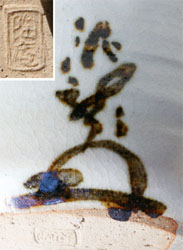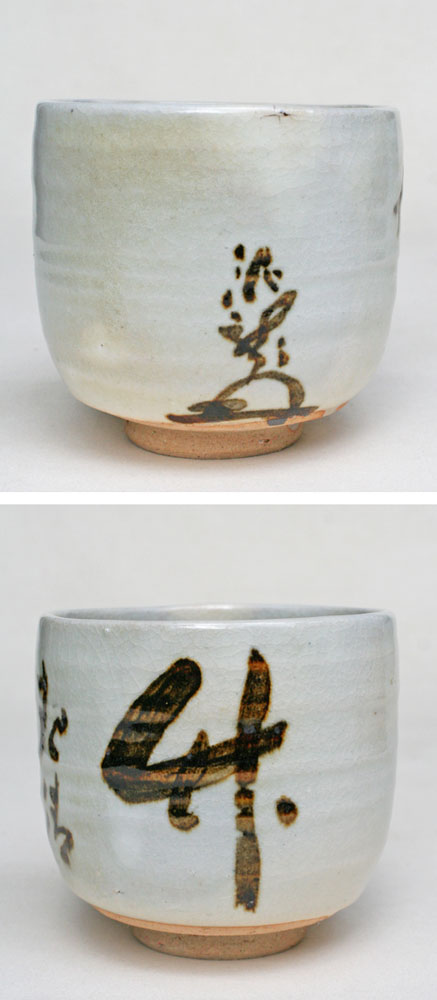Kyôyaki
Chawan, tea bowl - 竹杞清風 - “Bamboo and river willows in a clear breeze.”Signed: Deiryû with kaô
Seals: Unread
Technique: Wheel-turned grey craqueld glaze with a brown tetsu-e, iron oxide calligraphy Ø 10 x 9
Condition: baking flaw, otherwise very good
竹杞清風 Chiku kisei kaze, Bamboo and river willows in a fresh breeze
Deiryû's work was overlooked for a long time, because his work was considered too much influenced by Nantembô. Being best known as a follower is not much of a recommendation. However, Deiryû's work absolutely has its own charm. You can't blame Deiryû for having been influenced by such a strong personality as Nantembô.
Kanshû Sôjun was born into a military family. Tuberculosis prevented a career in the navy and he became an acolyte. In 1911 at the Kaisei-ji temple in Nishinomiya he served to Nantembô as an attendant and he became his pupil in 1913. In 1924 he went to the Enpuku-ji temple at Yawata to study under Chishô Tesshû (1879-1937) from whom he became his inka, certificate of enlightenment.
After his return from Taiwan in 1932, where he had been promoting Zen, he returned as an abbot to the Kaisei-ji, lecturing Zen. When in 1937 the shike Tesshû of the Enpuku-ji died in a car crash, he was asked to take his place. From 1942 he was the 626th generation kanchô of the Myôshin-ji. He continued the Zenga tradition of Nantembô.
Reference:
Berry ‘06 p. 193
Audrey Yoshiko Seo p. 35-57
Dujin pp. 38-44, 84-85 (# 17-23, 63-65)
Welch p.159-160
Moog p. 228
Price: SOLD

